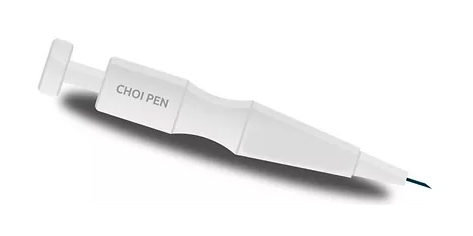Follicular Units Extracted From Back of Your Head And Then Transplanted To Needed Areas
WHAT ARE THE METHODS?

What is Sapphire FUE Hair Transplantation?
Being in constant change and development, medical science gives birth to more innovative techniques at any moment. Naturally, hair restoration procedures also receive their share of novelty, and they become more and more crucial for many people, since these restoration techniques create satisfactory results in terms of physical health as well as mental health, considering the fact that acquired sense of beauty attaches great importance to the aesthetic appearance of one’s.
One of these mentioned developments is the Sapphire FUE hair transplant technique. This advanced technique is performed with special instruments produced from a gemstone, called sapphire, based on FUE hair transplant procedures. It is an improved application of the FUE technique. In essence, these sapphire stone blades are used to create incisions at the recipient site, and afterwards, hair follicles are implanted in these micro slits. V-shaped tip of these sapphire blades allows the operation to become shorter in comparison to U-shaped steel blades, as they provide more incisions with minimal attempt and zero damage to scalp tissues. As a result, it an easier procedure and a more natural appearance overall.
Knowing the tool: Sapphire blades
Comprised of single crystal components, sapphire blades are a hundred times harder than steel blades, though not as hard as diamonds. Sapphire blades are able to endure long operation hours without complications, as they have a high level of durability.
The exceptionally sharp cutting edge of the blades and low friction factor rate allows the surgeon to perform with minimal tissue trauma. Consequently, scarring is reduced to a considerable extent, and recovery time is diminished. As an optimal instrument for delicate surgical techniques, sapphire blades provide several advantages, such as:
- Sapphire blades hold the edge better than standard surgical tools since they are harder and sharper.
- Sapphire blades allow making much finer incisions than standard surgical blades so that the level of cell damage reduces significantly. Clean and accurate incisions speed up the recovery period and diminish the possibility of scarring.
- Sapphire is a non-metallic gem, so it cannot give rise to metal ion reactivity. Sapphire blades do not affect lymph or blood systems in any way since they are inactive.
How is Sapphire FUE hair transplant applied?
As in the case of any kind of surgical operation, the first step you will take is to consult with your doctor and inquire about all kinds of questions that you may be curious about or bothered with. During the consultation, your doctor will initially analyze your hair’s amount and density as well as your scalp tissues and general health conditions, while preparing for several tests. In this way, your doctor will be able to ensure that your physiological health as well as your mental condition permit a Sapphire FUE surgery. Listening carefully to your concerns, your doctor will try to determine your cause of hair loss, and make sure that your expectations are decently realistic and applicable.
Afterwards, it is time to decide on the recipient area for the transplant. The shape and general features of the patient’s face is the determining factor for the planning and mapping of the hairline as well as the patient’s expectations and wishes.
After the planning phase, you will be taken to the operation room, and injected local anaesthetic agents into your scalp. As soon as the anaesthesia takes effect, your surgeons will begin the extraction process, harvesting an adequate amount of grafts by means of a surgical instrument such as forceps from the back of the head near the neck. Once the extraction is completed, your surgeon will take the necessary steps in order to prepare the recipient area for graft implantation. Considering the previous planning of hairline, small incisions will be made according to the placement of new hair follicles, using sapphire blades. The next and final step is the implantation of hair follicles. Your surgeon will insert each of the extracted grafts into the premediated channels one by one, and finally, the operation will come to an end.
It is worth mentioning that approximately 4.000 – 6.000 grafts can be extracted in each session, and each graft consists of 2 to 3 hair follicles. Depending on the density of the hair and the number of extracted follicles, the Sapphire FUE technique enables implanting approximately 50-60 follicles per square cm. Moreover, since Sapphire FUE does not require skin-lifting or incisions to the donor site, the recovery time needed is significantly low, and the slits at the recipient area heal in a few days, without any visible scarring.

DHI METHOD
Whether cosmetic preferences or health concerns, hair loss is a condition that millions of people struggling with, for various reasons or purposes. Fortunately, hair transplantation is a rapidly growing sector where technological and medical innovations are making the improvement of the transplantation process and overall final results much more evident and remarkable, day by day.
One of the recent examples of such advancements is the Direct Hair Transplantation technique, which is regarded as an advanced follicular transplantation method. With the skills of certified surgeons and the latest medical equipment, the DHI procedure guarantees a natural-looking hairline, providing a density as much as possible.
Direct hair transplantation is applied with an implanter known as Choi Pen, which is a very fine medical tool with a diameter of 1mm or less. It is an extremely functional tool, ensuring the perfect direction, angle and depth for surgeons to achieve desired results. As part of the procedure, the hair is removed from the donor area via Choi pen and directly implanted to the recipient site without delay.
Understanding the tool: Choi pen
Initially used in South Korea, the Choi pen developed as an alternative approach to follicular hair transplantation with the intention of speeding up the process. It does not change the fact that follicular units still have to be carefully prepared manually, but the procedure is performed by means of a mechanical implantation device. Once loaded, the Choi pen is able to contain 1 to 4 hair follicles which are inserted into the recipient area when the plunger is pressed. A three-person team comprised of two loaders and one planter can implant up to 12 grafts per minute. Gaining control over the spacing and direction of each implant, more and more surgeons around the world is opting for this instrument as well as the overall technicalities of the operation.
Since it is a tool that provides utmost precision and speed, the Choi pen increases the survival rate of the hair follicles significantly. The more they remain out of the body, the more damage they can take; therefore, the Choi pen becomes one the most suitable options out there, as it allows surgeons to operate with multiple grafts at once, and the small nature of the pen enables several surgeons working at the same time.
Are you a good candidate for DHI?
DHI is commonly preferred by people who have advanced hair loss since they require a higher amount of grafts. Men who have been struggling with male pattern baldness for at least five years are also advised to undergo a DHI operation as it is the most effective restoration method for those who have advance hair loss, and also patients with no reaction to medical treatments benefit from DHI procedures. If your hair loss condition stems from any kind of trauma such as burns or injuries, you can consult a hair loss surgeon in order to learn the intense effects of the DHI procedure and its capabilities on covering scars. However, it is important to note that complete baldness decreases the efficacy of the procedure, and patients who have this type of hair loss are not regarded as optimal candidates for DHI.
Another point worth mentioning is that your medical history is a critical factor in determining your candidacy for DHI operation. For instance, if you are taking certain medications with blood-thinning properties, you will not be able to undergo DHI since it can aggravate the possible side effects such as bleeding.
The DHI procedure
Before the operation starts, your surgeon will draw your new hairline on your head based on the pre-determined plans and the goal of your hair transplantation. The next step is the injection of long-lasting local anaesthesia on the donor site. While general anaesthesia is usually not required, you may request a sedative to become more comfortable, since it is a quite time-consuming process.
Once the anaesthesia has taken effect, your doctor will start the extraction process, manually using an extractor device with a diameter of 1 mm or less. As soon as the hair extracted from the donor area, it will be immediately implanted into the recipient site without further ado. Skipping the incision step, your doctor will load the Choi pen with the extracted hair follicles, and directly implant them into your scalp, according to the pre-determined plan of action. The placement of the hair follicles must be done with utmost diligence as it requires a precise direction and angle of 40 to 45 degrees. The surgeon’s skill and experience become prominent at this point. 2 to 6 pens and 15 to 16 needles of various sizes are needed throughout the operation, depending on the structure of the hair.
Following your surgery, you will be informed on what kind of an aftercare routine you should follow on the instructions of your surgeon. You will be given all kinds of necessities required for a post-op period such as shampoos and medications.
While it is understandable to have a desire for quick results as it is a cosmetic condition, it is still important to have realistic expectations. The results of the DHI operation do not appear immediately, visible hair growth is expected to occur at least 5 to 6 months after the procedure. There is another fairly normal part of the operation which stirs up trouble in the eyes of the patient, which is then transplanted hair loss happening throughout the weeks after the operation. You don’t need to panic over this period as your hair will be back gradually, both in the transplanted area as well as the donor site.
Finally, it is important to remember that the final results vary from person to person, and greatly rely on patient’s natural hairline. Likewise, considering your medical history, physical condition and environmental factors, your recovery period will proceed gradually, depending on the individual momentum of your hair.
WHAT IS THE DIFFERENCE?
 The main difference between the classical FUE technique and Sapphire FUE is the surgical instrument used for opening implantation channels at the recipient area. As part of the Sapphire FUE, steel material razors are replaced with blades made out of sapphire, which is a gemstone never losing its sharpness. Yes, it is an extremely valuable and expensive crystal, but its effectiveness in making incisions can never be ignored.
The main difference between the classical FUE technique and Sapphire FUE is the surgical instrument used for opening implantation channels at the recipient area. As part of the Sapphire FUE, steel material razors are replaced with blades made out of sapphire, which is a gemstone never losing its sharpness. Yes, it is an extremely valuable and expensive crystal, but its effectiveness in making incisions can never be ignored.
When compared to metal slits, sapphire tips are much sharper and stronger; as a result of these advantages, sapphire tips reduce tissue damage to a minimum. As opposed to U-shaped channels of metal slits, sapphire tips allow the surgeons to work with V-shaped canals, reducing the possibility of tissue damage on the skin even more.
Since the superior sharpness of the sapphire tips increases the number of grafts implanted, Sapphire FUE hair transplantation creates more of a denser and natural look. Moreover, being a substance found in nature, the unique properties of the stone has a variety of anti-bacterial qualities which speed up the recovery period.
PACKAGES


MOST ASKED QUESTIONS
Does hair transplant hurt?
Hair transplantation is considered a non invasive surgery. The local anesthetic used has prolonged analgesic action, so the patient will not feel any kind of pain. The operated area remains silent for several hours after surgery. In the days following the intervention you may experience a slight pain in the receiving and donating areas, which will disappear within a few days.
How long does hair transplant last?
The duration of the intervention depends on the number of bulbs that will be transplanted. It usually takes 6 to 8 hours.
Who can undergo hair transplantation?
Hair transplantation can be men and women, from 18/20 years old. Since it is a little invasive, almost everyone can undergo hair transplantation, except in patients with serious health problems, such as immunosuppression.
What is the risk of hair transplantation?
Since it is a non-invasive operation performed in local anesthesia, the risks of such intervention are low. The only drawbacks that our patients experience are mostly in the post operative: itching, headaches and slight swelling, but they disappear within a few days.
Will you notice blank spaces in the donor area?
No. One of the biggest concerns about who intends to undergo hair transplantation is this. The advantage of FUE is just that. The doctor in fact ensures that close to the follicular unit extracted there are others, ensuring the absence of empty spaces in the donor area.
How long is it necessary for the transplanted hair to recover?
Once transplanted, the transplanted hair will fall as the bulb stays inside the groove and begins to regenerate the hair. Hair will begin to grow again after about 3 months and will continue to grow in the following months. Around the seventh month, patients will notice that their hair is naturally natural.
Will you notice scars after the transplant?
Absolutely not. After 2/3 weeks, during which croutons can be formed in areas affected by transplantation, there will be no sign.
What to do after the intervention?
After the intervention you will need to follow the instructions of the medical staff to maximize the result of the intervention. Interpreters in the clinic will provide you with all the necessary instructions for products to be used and activities to be avoided in the weeks following the transplant (such as sports and physical exertion).
Detailed Information, You Can contact Us Via phone, Whatsapp or e-mail.

 English
English Français
Français Deutsch
Deutsch العربية
العربية